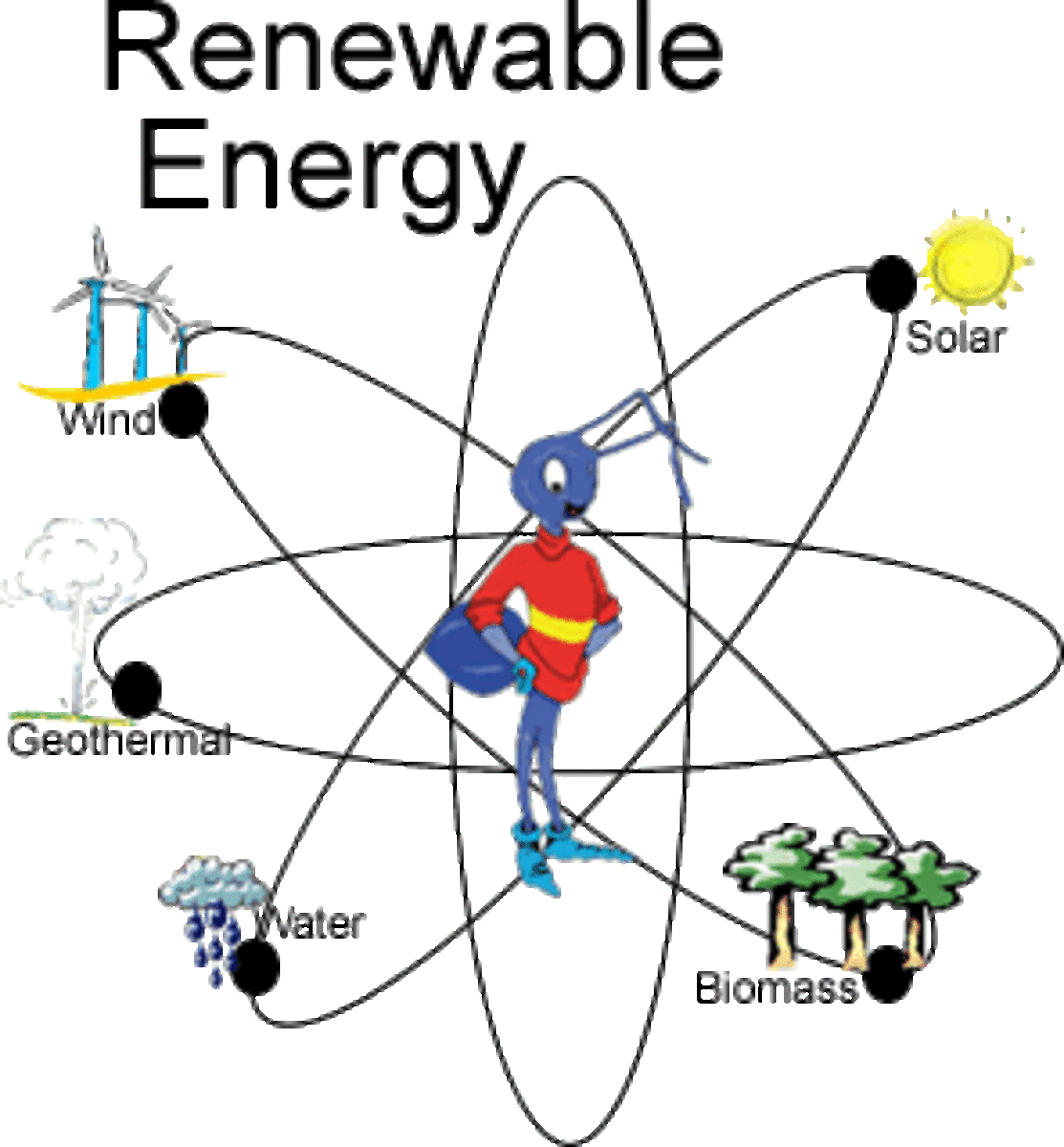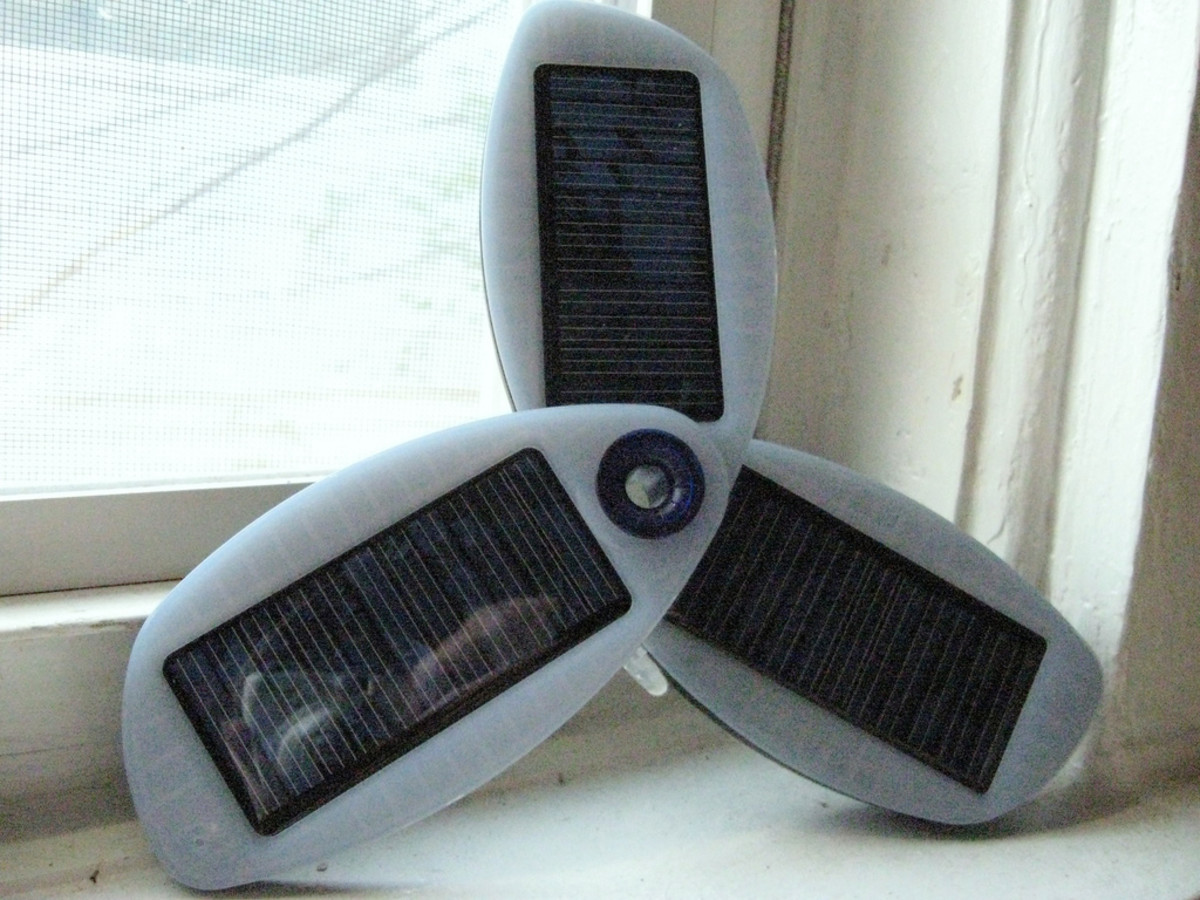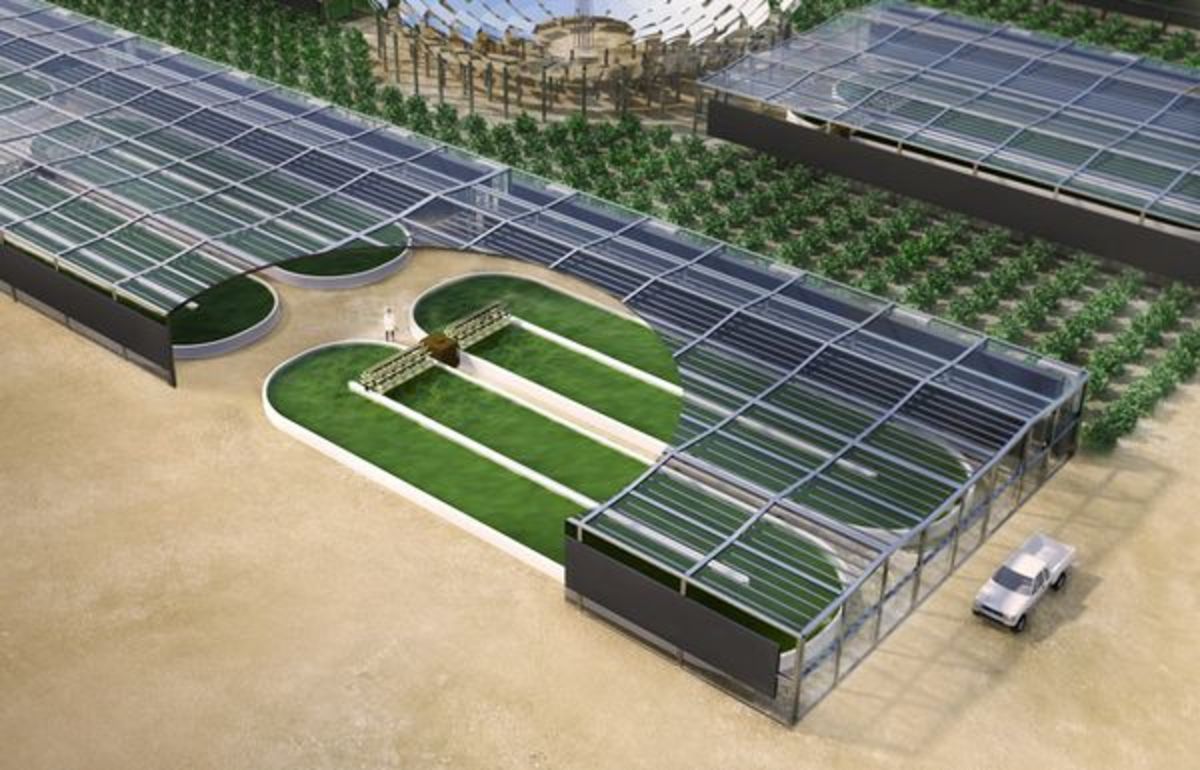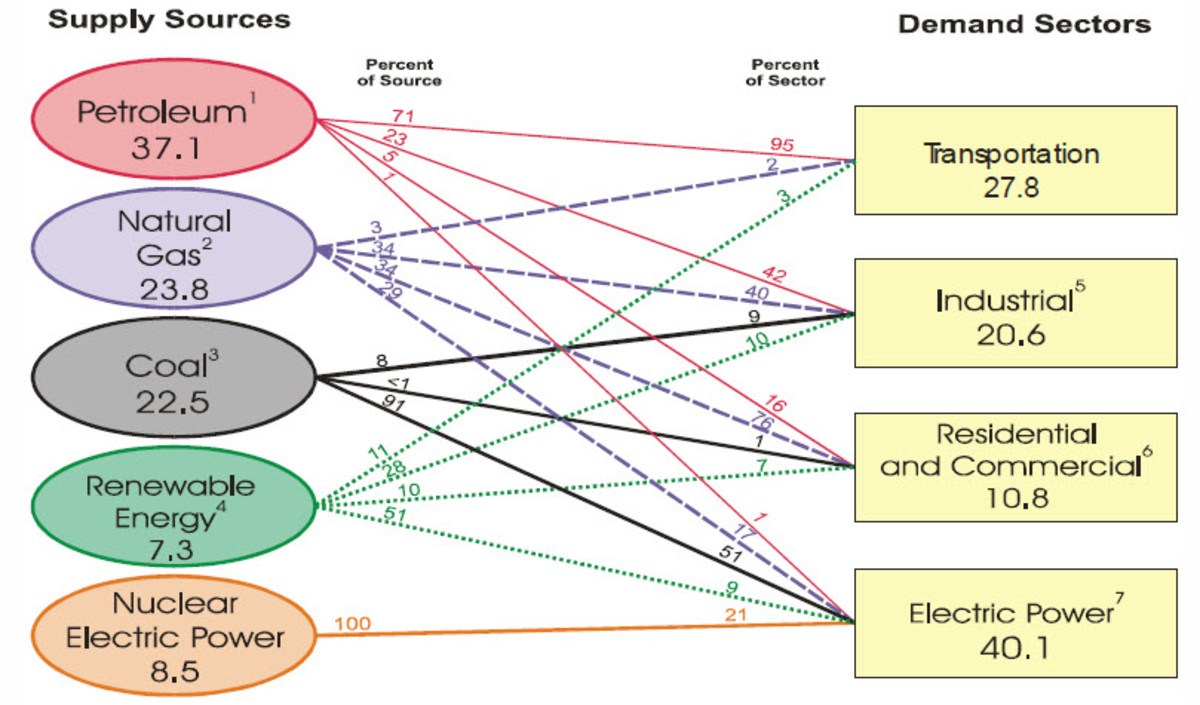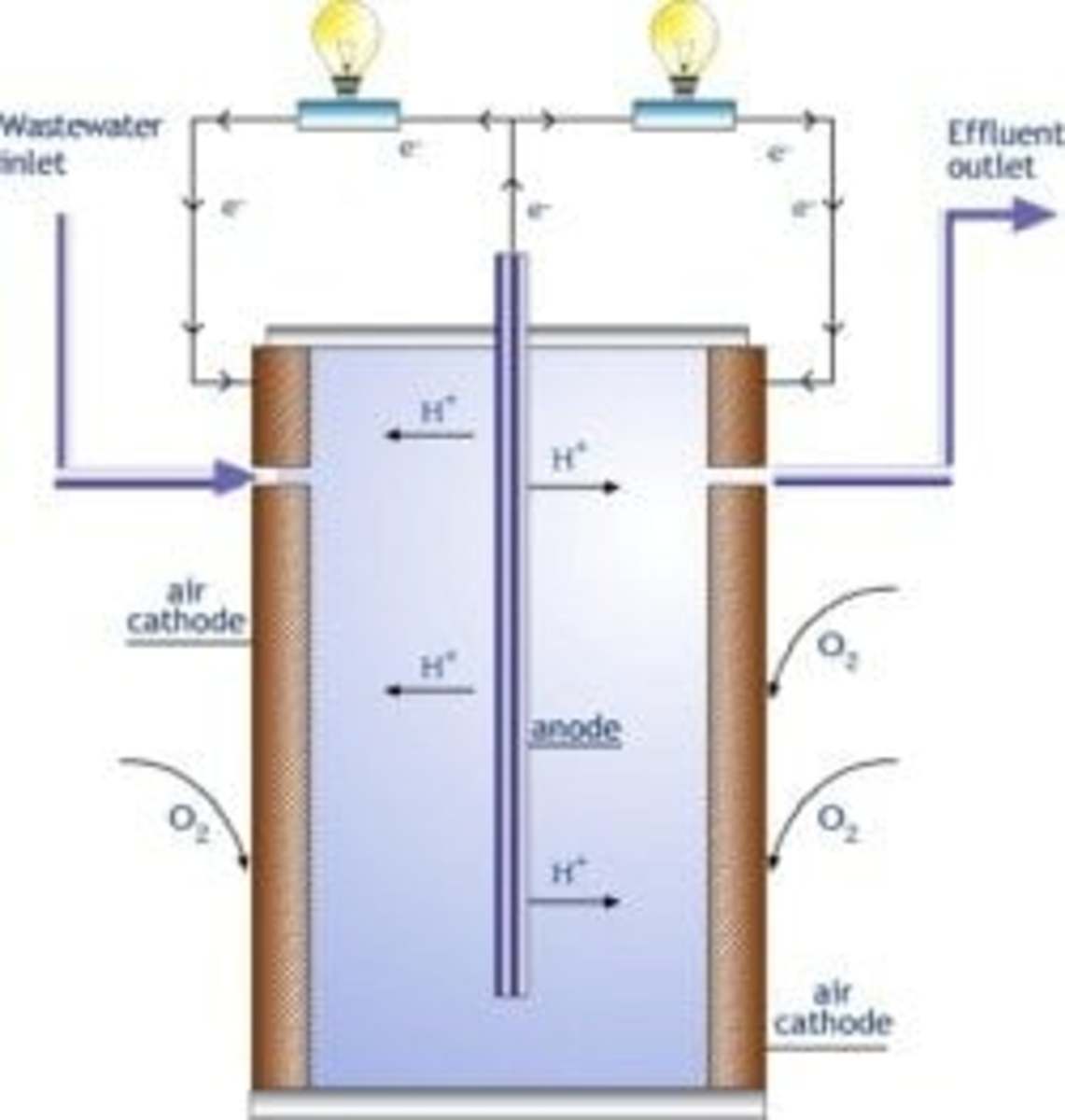The New Harvest
Energy. The driving force of the whole universe. The reason why some things move and others stay. It powers the lively and the lifeless.
Put simply, Energy probably is something which we have not been able to define clearly till now despite our Hyper Einstenian scientific brains. Now anyone can defeat me by citing that “energy is the capacity of doing work” from one of the textbooks. That is totally unimportant because the purpose here is to understand how energy plays a role in our daily activities and its proper and judicious use.
Mankind has been harnessing the nature's power for fulfilling energy requirements since a long time. Energy from numerous sources like the sun, water, wind and the most important; dear firepower: the fossil fuels, has been tapped by the humans. When we have options, we make some choices. Our success pretty much depends upon the choices we make and how we build upon them. Now there are some good choices and some bad ones. By bad, I don’t mean to demean the character of any of them but the consequences they have. Man has always made the bad choices first and then switched on to the good ones realizing his folly after a reasonably good amount of time.
When man found about fire, it was the most delightful discovery. Then coal was unearthed and became an instant hit with humanity. Suddenly, we had the power to move the earth, roam about the land and fly in the sky in our self made machines all because of coal. Coal and its close associates started flooding the mindsets of engineers, industrialists and businessmen alike. This great discovery powered our machines, generated electricity and made our lives more comfortable than they used to be. So much was the impact that coal came to be known as the dark equivalent of diamond. This seems to be a great success story indeed. But it has an ugly side to it. The use of coal for our energy requirements had an evil associated with it : pollution.
Today, 85% of the total global energy generated is from ‘fossil fuels’ which shows their clear dominance and our heavy dependence. One of the reasons that explain the wide and immense use of fossil fuels is their ability to release large amounts of energy on burning them. Our machines have been designed and developed to burn these fuels and extract energy from them. When fossil fuels burn, they leave behind ash and give out smoke and other gases such as Carbon Monoxide CO, Sulphur Dioxide SO2, Nitrogen Dioxide NO2 etc. These gases though already present in the atmosphere and on the earth’s surface in one or the other natural form, their percentage was rather small until now. Constant use of fossil fuels for nourishing our energy requirements has led to a steady increase in the share of these so-called ‘greenhouse gases’ and their levels have increased to nothing less than alarming.
Global Energy Trend
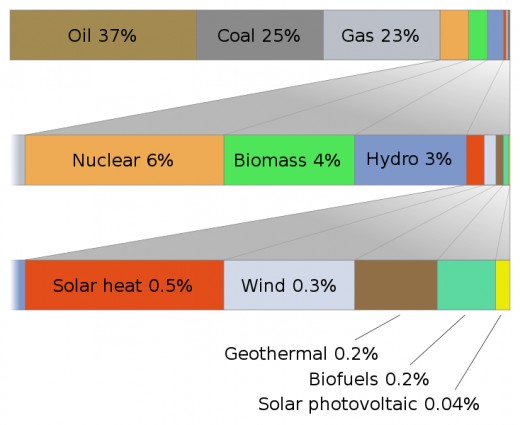
Currently, the global energy demand is met largely from various sources like oil, coal, gas all of which are part of fossil fuels. This adds up to a total percentage of 85%. The current percentage figures are shown alongside in the figure with oil topping the chart at 37%, next comes coal at a quarter and gas at 23%. The remaining 15% comes from a more glorious lot about which we shall take a deep insight.
We have learnt from our history texts that ancient people used the power of flowing water and wind to turn a wheel or a mill which was used to grind grains, lift loads and lift water to the surface. Solar energy was used to dry food articles, provide daylight in buildings and to heat up water. All these sources are termed as renewable sources of energy. Fossil fuel reserves on earth are limited and their creation takes a long duration of time. At the rate which we are consuming them, they will be exhausted in a relatively small amount of time. Unlike fossil fuels, renewable energy sources never get exhausted or depleted. Sunlight, water, wind etc. are abundant in nature and hence need no replenishment, a characteristic which enables their continuous use. Despite this advantage, the ancient people still depended largely on combusting of coal and wood for various purposes. Why? Because, the machinery required for harnessing power from these sources was bulky and yielded little power in comparison to coal which burned easily and released loads of power.
It was not until the mid of the twentieth century that everyone came to realize the energy crisis that awaited the world. With the automobile market blossoming, the roads of modern civilization started getting hogged with cars. This led to a manifold increase in the demand for coal, crude oil and its derivatives. Electricity generation had the biggest share in eating up the reserves. A worldwide alarm was rung that earth’s vault was getting empty. Adding to the woes was the biggest environmental concern ever faced namely pollution.
It was then that scientists, researchers, engineers and environmentalists echoed their thoughts to the world and began searching for alternate sources.
Attention was then paid to the ever abundant renewable sources for exploiting them as full time power generation sources. These sources form the new breed of energy sources which aim toward a sustainable and eco-friendly future.
Renewable and other alternate sources of energy are discussed below :
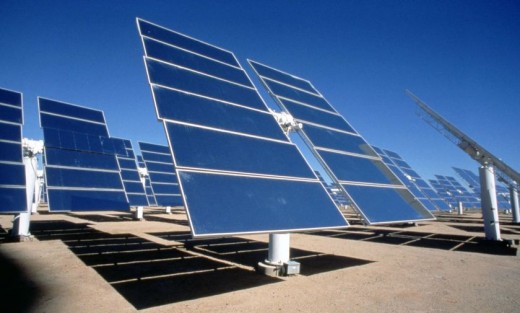
Solar Energy
Energy in the form of heat and light from the sun form the prime source for almost all life forms on earth. Solar energy is also responsible for causing wind currents and for the water cycle which are two other renewable sources.
Solar energy can be used either for heating or electricity generation. Solar heating is of two types: active and passive.
Active solar heating is carried out by the use of solar collectors which collect and retain the heat from the sun and then direct it or supply it to a heater which can be used for heating water or a space inside a building. Active solar heating is used mostly for domestic purposes, the best example of which is the rooftop solar heater. It can be also be used for electricity generation in solar towers which collect solar heat and use it to convert water into steam for driving steam turbines. The largest plant of this type is located in Mohave,CaliforniainUSAwhich produces 90% of the electricity by this method.
Passive solar heating is the use of the structure of buildings and their interiors to capture the heat and use it for space heating. Passive solar heating doesn’t use any solar collector, rather the building is shaped in such a way so as to enable proper heat flow and collection. The purpose of passive solar heating is to reduce the heat requirement of the inhabited place and also the consumption of fossil fuels.
Electricity can be generated directly from solar radiation by the use of ‘photovoltaic cells’. Photovoltaic cells are solid-state devices made from polycrystalline silicon that can directly convert solar radiation into electricity. The concept of photovoltaic cell was discovered by Edmond Becquerel and the first working prototype was made by Charles Edgar Fritts. A single photovoltaic cell has a power output of only about 1.5 Watts. Hence for practical purposes, several such cells are connected together to form rectangular blocks and these blocks are further arranged on an anodized aluminium panel to form a module. A module has much higher power output than a single cell. To meet large electricity demands, several modules are arranged in arrays and connected together. The efficiency of photovoltaic cells is about 17% which is quite low. Efforts are constantly being made to increase it to 24%. The amount of electricity generated by a cell depends on the intensity and the angle of incident sunlight as well as the surface area of the cell or module. The tropics receive the greatest amount of sunlight throughout the year and hence are ideal for setting up solar plants. However, the cost of manufacturing and installation of such plants is quite high at the present time which stands as a hindrance in its expansion, although prices are coming down by a good margin each day.
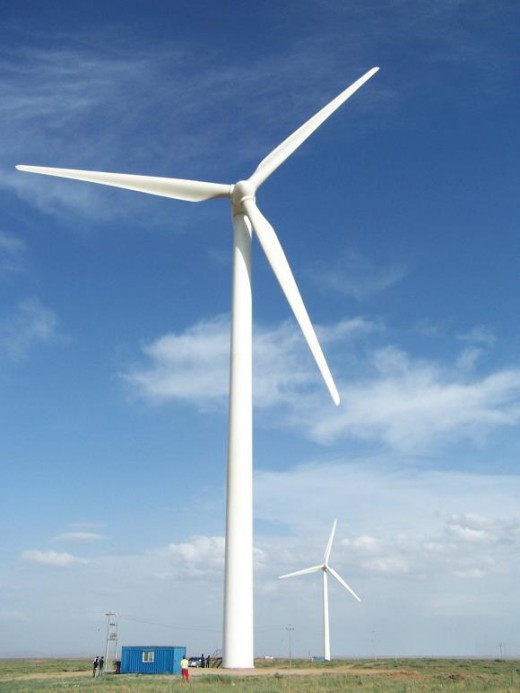
Wind Energy
Due to unequal distribution of sunlight and thus energy between the tropics and the poles, there is a gradient. This gradient causes formation of currents in the atmospheric air. Besides the pressure difference between the land and sea areas also causes the air to diffuse to the lower pressure region. This current of air is known as ‘wind’ and carries a lot of energy with it. Thus wind energy is a form of indirect solar energy.
Wind energy can be used for generating electricity using a device known as ‘windmill’ or more appropriately ‘wind turbine’. A wind turbine has blades just like a fan connected to a shaft which is supported on a long column. The blowing wind exerts force on the blades which rotates the shaft. The rotation is then transmitted through a suitable gearing system to the generator shaft which converts the rotation into electricity. Continuous blowing of wind is necessary for continuous power generation by a wind turbine. Power generation also depends on the wind speed because higher wind speed means higher rotational speed of the rotor and hence power.
Wind turbines are of two types: Horizontal axis wind turbine (HAWT) and Vertical axis wind turbine (VAWT)
Horizontal axis wind turbines have their rotor axis in horizontal direction. They may have a single blade, three blades or multiple blades depending on the wind speed and the frequency distribution of wind in the area. They also have a wind vane attached to them to determine the current wind direction according to which the whole setup is rotated to be in alignment with the wind direction. This type has a disadvantage that it has to be aligned when the wind changes direction which requires additional equipment for achieving the same.
Vertical axis wind turbines have their rotor axis in the vertical direction. This design does not require any arrangement for aligning the rotor with the wind direction because the blades will rotate irrespective of the wind direction. The VAWT is of Darrieus type, H-type and V-type.
Wind turbines produce from tens or hundreds of watts to as much as 5 MW. The major cost incurred is in the manufacturing and erection /installation as power generation is free of cost and the running costs are very low. Manufacturing costs can be significantly decreased by entering mass production which leaves us with the installation costs which still make upto 70% of the total cost. Wind farms have been setup in various parts of the world mainly in Europe and North America.
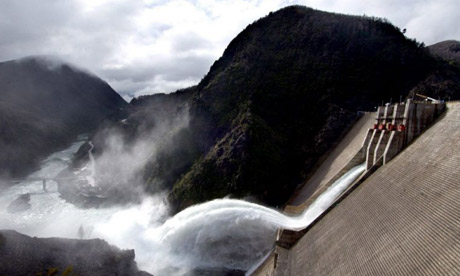
Hydro Energy
Water is an indispensable entity for all life forms on the earth without which survival is impossible. Water occupies three quarters of the earth's surface in the form of ocean's seas, rivers, lakes, ponds etc. Solar energy heats up the surface water causing it to vaporize and form clouds which eventually spill it out on the land in the form of rain, snow, hail and sleet. This land water flows back to its starting point; the various natural reservoirs and thus completes what is known as the ‘water cycle’. It is well known that water at a height has potential energy and flowing water possess kinetic energy. The hydro energy is also an indirect manifestation of solar energy as water is caused to flow through a gradient by the sun. This energy can be harnessed for power generation purposes given that water is stored in some kind of a reservoir at a certain height and then made to flow over an arrangement situated below that can rotate the generator to produce electricity. The reservoir is a man made structure known as a ‘dam’ and the arrangement consists of a long passage and a rotating member known as a ‘hydraulic turbine’. The whole setup is called a ‘hydroelectric power plant’ and is built on rivers. Hydro Energy contributes 6% to the total global energy generation process which is highest among the renewable energy sources. Hydraulic turbines convert the kinetic energy of water into electricity via the generator. Blades are provided on the turbine which enables its rotation by the impact of water on them. The height of the water level in the dam from the position of the turbine rotor is termed as ‘head’. According to the head, the plants are categorized as high, medium and low head plants and likewise a variety of turbines are available namely: Pelton Wheel, Francis, Kaplan and Bulb turbine. The erection of a hydroelectric power plant takes a good amount of both time and capital. Once fully operational, its running costs are extremely low and can supply electricity continuously and consistently for very long periods. Hydro energy is very reliable, sustainable and extremely stable form of energy as long as the water supply is continuous. The availability of water bodies and flowing water is critical to the generation of hydro energy. Perennial rivers are the preferred site for hydro electric power plant installation as the water supply is continuous. Seasonal rivers are also utilized for power development but with surplus storage for water during off season. The dependence of hydro energy on water availability is possibly the only point against it. The capacity of power plants around the world has been on a steady increase since their development thus grabbing a bigger share of the global energy usage and adding to the growth of economies.
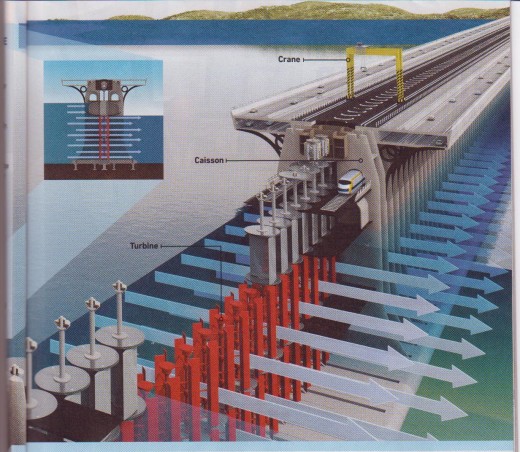
Tidal Energy
Tides are caused by the gravitational pull exerted by the moon and the sun and owing to the earth’s rotation. Tides lead to a rise or fall in the water level in oceans and seas and accordingly are called as ‘high tide’ and ‘low tide’. They occur once every day. This rise and fall of water can be successfully converted into energy for human purposes by making special arrangements. Generally, barrages are made on the shore where water is stored during high tide and released during low tide driving turbines situated in the openings of the barrages. The turbines rotate and operate the generator which produces electricity which is stored in powerhouses for further supply. Since the tides occur only once in every 24 hours, the energy produced is not continuous but on the other hand are very predictable unlike solar and wind energy. Besides, the amount of electricity produced is not very high which reduces its chances of being used as a major energy supplier. The barrages or reservoirs are generally built on rocky shores because of architectural feasibility and from the view point of stability of the structure. Tidal energy is in its early stage as it is relatively nascent and under experiment. But recent advancements in turbine and generator technology and other structures that do not involve the storage of water can lead to a reduction in manufacturing and installation costs as well as an increase in the power produced. The major hindrance in the wide scale development of the tidal power is the lack of availability of sites around the world. The first tidal power station was the La Rance Tidal power station in Brittany, France erected in 1966. It has an installed capacity of 240 MW.
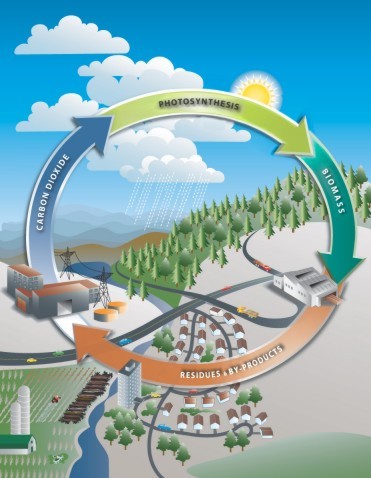
Biomass Energy
Biomass is the total mass of all the organic matter present on earth including living beings. The biomass possesses energy by virtue of its contents: the organic matter mainly consisting of carbon compounds which upon burning or degradation yield energy. Although fossil fuels also come under biomass, they cannot be considered as renewable sources for the reasons stated earlier. Agricultural crops like wheat, maize, corn etc. can be used as fuels for industrial and domestic purposes. They can be called renewable to some degree because they are harvested on agricultural lands which have grown in humungous numbers since man started farming owing to the ever increasing population. Besides, such crops can be grown again and again on the same piece of land and in a variety of environments. Bio fuels are obtained by the degradation of such crops into substances capable of combustion.
Ethanol which is the major bio fuel is obtained by fermentation of starch and sugar crops like maize and sugarcane. Ethanol (C2H5OH) is a cleaner fuel than petrol as it has much less emissions and it can be readily used in all the existing machinery. The best means of combusting ethanol is inside an internal combustion engine with little modification to the engine structure. Currently, ethanol is used as an additive with petrol to improve the emission characteristics of both the fuels. Countries likeBrazil andNorway are using ethanol as the major component in petrol engines with percentages varying from 55 – 85 % followed byUSA. Ethanol is considered to be a future fuel and its production is about to become a big business.
Bio diesel is another bio fuel which is derived from animal fats and oils using a process known as ‘transesterification’. Bio diesel is similar in composition to the diesel fuel used in diesel engines but it mainly consists of fatty acids. It is also used as an additive with diesel in normal diesel engines without any modification. They burn more completely and properly returning great fuel efficiency and much lesser emissions. One great advantage of using bio diesels is that they can be used in diesel engines (without modifications) that are more efficient than petrol engines. Hence bio diesel is used to power heavy machinery like earth moving machines, farm equipments etc. and transport and passenger vehicles alike.
Besides fuels derived from crops, there is another source which can be used for fulfilling our energy requirements. This source is the animal waste and waste generated by human activities: agricultural, industrial and domestic. All living organisms eat food for living and hence also excrete. This excreta, though filthy and smelly is a valuable source of energy. Energy can be extracted from such waste matter by biodegradation which is the breaking down of waste into smaller less complex substances by the action of enzymes released by bacteria. Biodegradation is of two types: Aerobic and Anaerobic; aerobic being the degradation in the presence of oxygen and anaerobic in its absence. Thus waste matter can be used for nourishing energy requirements by proper means of degradation. For carrying out degradation, various methods are used such as landfills, sewage treatment plants, incinerators etc. Landfills are essentially large pits dug in the ground for dumping of wastes, generally municipal wastes. Earlier landfills used to be open which were more of a trouble and public nuisance and hence covered landfills were later introduced. Landfills have a small chamber for collecting the gases generated during degradation process. The chamber is connected to a supply line which supplies the gas for various purposes. The gas mainly produced is methane with small quantities of other gases like butane, propane and ethane. Incinerators are small plants that burn the waste matter in chambers at high pressures to obtain useful gases for industrial purposes. Incinerators use ‘pyrolysis’ which is the breakdown of wastes by application of heat. Sewage treatment plants are the most sophisticated type for sewage management and their proper use. A sewage treatment plant has special arrangements for separating bio-degradable and non bio-degradable wastes. Both types of waste be it solid or liquid can be treated in such a plant. The bio degradable matter is made into slurry and then sent to anaerobic digesters which are chambers located below ground level and covered at the top. After anaerobic digestion by bacteria, the gas gradually formed rises and is stored in a smaller tank situated at the top of the chamber from where it is extracted and made available for supply. Various kinds of other bio fuels are also being used such as Bioethers, Syngas, Solid fuel pellets etc.

Piezoelectric Energy
Crystalsof certain materials such as Quartz have a natural property that when pressure is applied on them, electricity is generated. Such materials are called ‘Piezoelectric Materials’. These materials have a molecular structure such that they experience a charge separation when mechanically deformed. Such a charge separation causes the formation of electric dipoles i.e. positive and negative poles on two opposite faces of the crystal. This dipole formation generates a potential difference which generates electricity. Naturally occurring materials like quartz, tourmaline, topaz etc. do not produce much piezoelectricity. Artificial piezoelectric materials such as PZT( Lead Zirconate Titanate ) exhibits characteristics that can be beneficially used for production of electricity.
Piezoelectricity is a very novel concept and although the electricity produced as of now is quite low but still it can be utilized for domestic purposes. Technological advancements in this field can increase the power output manifolds. The electricity produced is clean and cheap as piezoelectric material is quite inexpensive. The energy concept is very expandable and is only limited by our ingenuity and imagination. Piezoelectric cells can be laid down on footpaths, on the floors of malls, schools and colleges where large numbers of people gather thus increasing the power output. They have been used in soles of shoes which generate electricity while walking. Scientists are also working on a technology known as ‘piezoelectric trees’ which feature leaves made of very thin and light piezoelectric and semiconductor material. Slightest of wind will exert pressure on these leaves thus producing electricity.
All these unconventional sources of energy talked about above point to a brighter, better and cleaner future. In the coming years our dependence on fossil fuels is expected to decrease as we incline our technologies towards the environment and harvesting these sources more efficiently and judiciously which is … ‘The New Harvest’.


